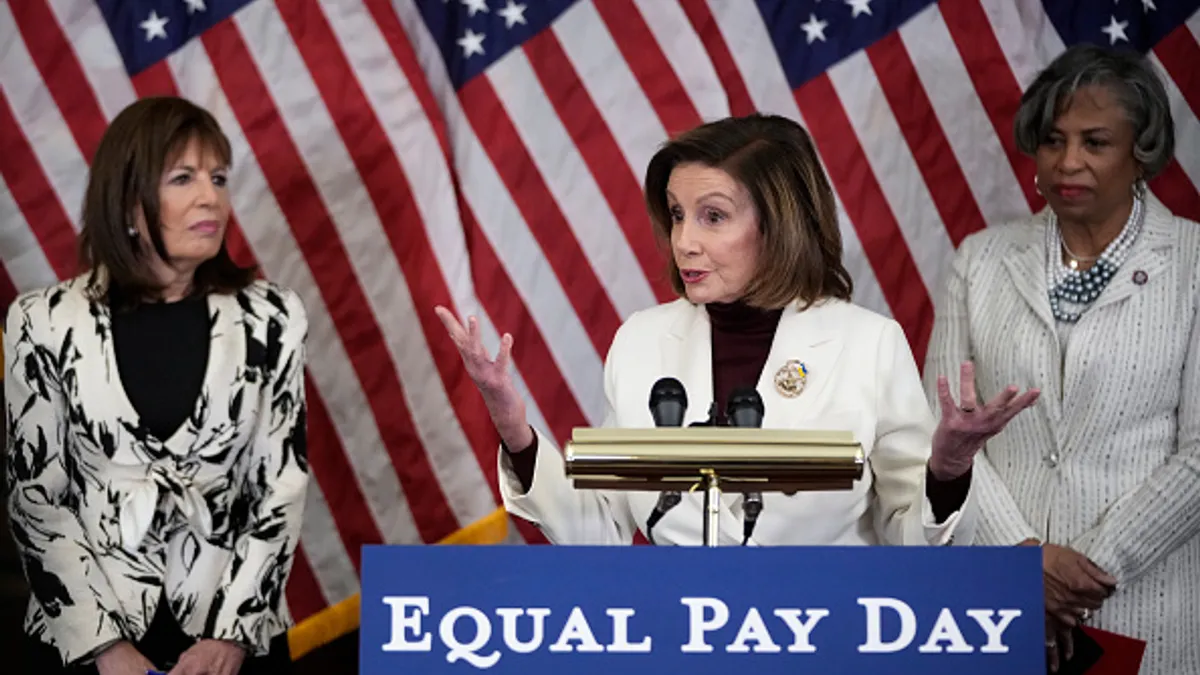Dive Brief:
- Despite the growing number of pay transparency laws, progress on reducing the gender pay gap has stalled in the U.S., according to Payscale’s Gender Pay Gap report, released Monday. Additionally, there’s been a minor decrease in support for pay equity, said Ruth Thomas, pay equity strategist at Payscale.
- In 2025, women earn 83 cents for every dollar men make, per the report. That gap widens as women age; by age 45, women make 72 cents for every dollar men make.
- Equal Pay Day, recognized March 25, was 13 days later than last year, meaning women with full-time jobs had to work nearly two weeks longer into the new year than in 2024 to earn the same as men did last year, according to AAUW, a nonprofit organization that promotes equality for women.
Dive Insight:
To address pay inequality, U.S. Rep. Rosa DeLauro, D-Conn., and U.S. Senator Patty Murray, D-Wash., introduced the Paycheck Fairness Act on Tuesday. The act is meant to “strengthen the Equal Pay Act of 1963, help eliminate the gender wage gap, and guarantee that women can challenge pay discrimination and hold employers accountable,” according to a news release.
“Let’s enact the Paycheck Fairness Act and empower working women by giving them the tools to ensure their contributions to the workplace are properly respected and reflected in their pay,” said DeLauro, who is the ranking member of the U.S. House Appropriations Committee.
According to Rep. DeLauro, the act would protect workers from retaliation for talking about their salaries with their colleagues; prohibit employers from requiring salary history from applicants during the hiring process; and offer workers who file sex-based wage discrimination claims under the Equal Pay Act the same recourse as employees who file race- or ethnicity-based wage discrimination claims under the Civil Rights Act.
“It’s disappointing to still see a lack of progress towards closing the gender pay gap,” Lulu Seikaly, senior corporate employment attorney at Payscale, said in a news release. “...It’s a critical retention tool for businesses, which is why, unsurprisingly, women employees frequently leave organizations because they don’t think they are being paid fairly.”
The gender pay gap is the result of structural inequality and “differences in opportunities for men and women based on gender norms that affect and constrain the choices women make before they ever bargain with an employer over a wage,” per the Payscale report.
That difference in opportunity can be seen among working parents. Women with children earn 75 cents for every dollar men with children make, the report found. Meanwhile, fathers earn 2% more than men without children, whereas mothers make the same or less than women without kids.
The Payscale report used data from more than 369,000 people in the U.S. who were surveyed between January 2024 and January 2025.














